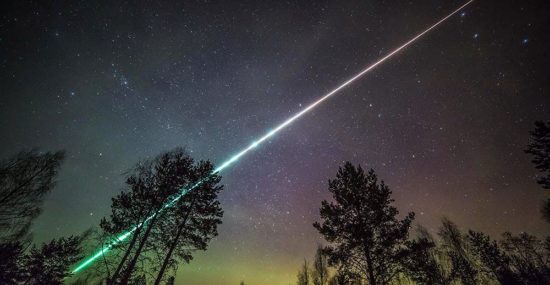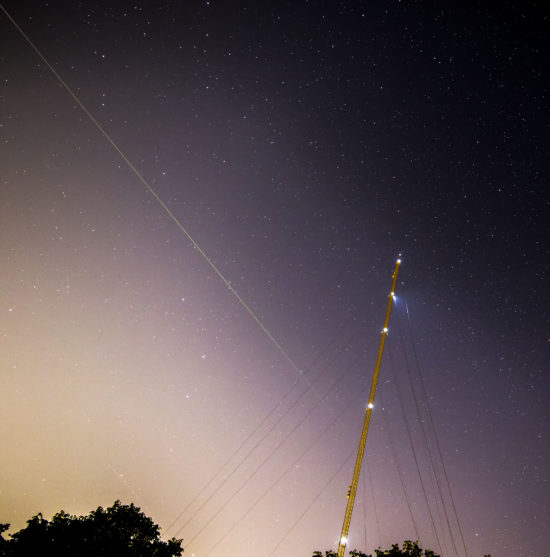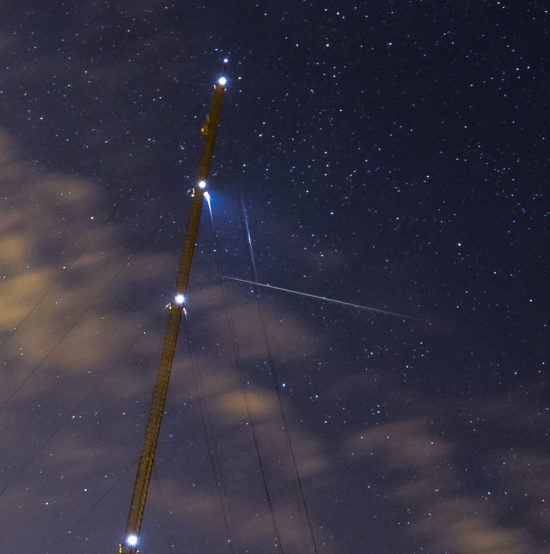Update: The NASA Fireball Network, monitoring only a few U.S. locations, logged 56 Perseid fireballs last night.
The best meteor shower of the year — the Perseids — peaks tonight. In preparation for a planned outing to a dark sky site, I ran my camera from our roof last night for 8 hours. Despite significant light pollution, I made the following captures. The first was only 1 hour after sunset, and is an “Earthgrazer”, when the radiant is still below the horizon and meteors skim the upper atmosphere with long tails:
While one might suspect this was a satellite, the angular extent of the path is 60 deg., and in only 15 sec satellites cover only a small fraction of that distance; plus, the green color indicates a meteor. Also, the NASA fireball network picked this one up (one of the sensors is close to my house).
The second photo is after the radiant is well above the horizon, so the meteors have shorter paths directly into the upper atmosphere:
Given that the NASA Fireball Network logged 56 fireballs last night, I’m hopeful for tonight’s display, which should be approximately twice as productive. You can watch in any part of the sky starting after dark. The long trail meteors will be earlier in the evening, then increase in number through the night but have shorter tails. If you have a choice of directions to look, I would suggest directly overhead (use a reclining lawn chair to save your neck), or generally north-eastward as a second choice. But meteors can occur in any part of the sky.
Hoping for mostly clear skies tonight.

 Home/Blog
Home/Blog






